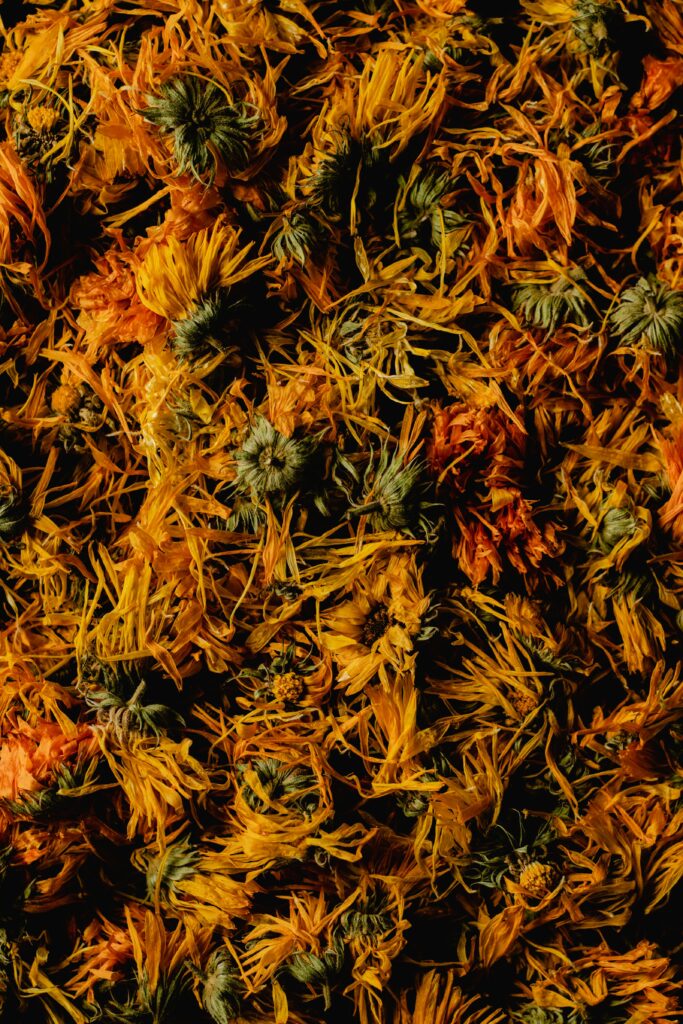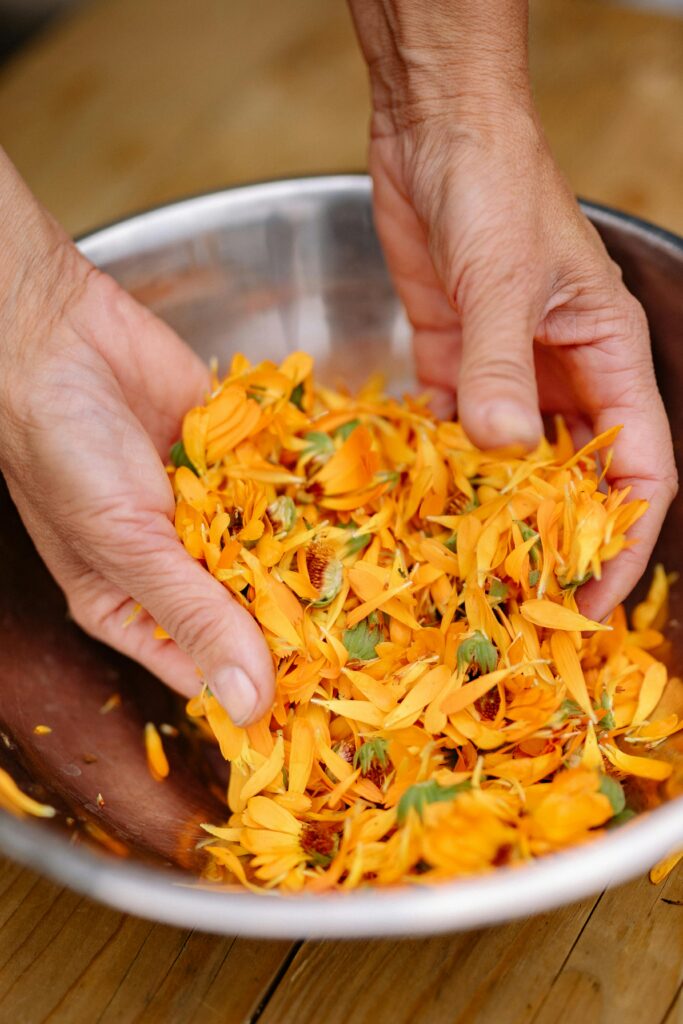Calendula: The Golden Guardian
Bask in the glow of Calendula, the sunny herbal starlet that’s as radiant as the dawn and as nurturing as a mother’s touch.
Known as “Marigold” in the mortal realm, this golden-hued flower has graced gardens and healing rituals for centuries, earning its place as one of nature’s most versatile healers. From its cheery petals to its potent properties,
Calendula is a favorite of healers, herbalists, and magical beings alike. Let’s explore why this golden guardian should be at the heart of your herbal apothecary.
A Bright History
Calendula’s history is as rich and vibrant as its color. The name itself comes from the Latin word calendae, meaning “little calendar” or “first day of the month,” as this plant seems to bloom in harmony with the cycles of the moon and sun.
It was revered by the ancient Egyptians as a symbol of immortality, and Hindus used it to adorn their temples as an offering to the divine.
In medieval Europe, Calendula found its way into soups, stews, and healing salves, earning the nickname “poor man’s saffron” for its culinary versatility.
Healers prized it for its ability to mend wounds, soothe inflammations, and uplift spirits.

Medicinal Benefits
Calendula isn’t just a pretty face; it’s a powerhouse of healing magic wrapped in golden petals. Here’s why it’s been treasured across the ages:

Feminine Ally: Known for its ability to balance the cycles of the moon, Calendula is a trusted companion for easing menstrual cramps and supporting hormonal health.
Soothing Skin Savior: Calendula is a top-tier healer for cuts, scrapes, burns, and rashes. Its anti-inflammatory and antimicrobial properties make it a gentle yet effective remedy for almost any skin woe.
Wound Healing Wonder: The petals of Calendula stimulate tissue repair, speeding up the healing process for minor wounds and irritations.
Gentle Digestive Aid: Calendula is as kind to your insides as it is to your outsides. It soothes the digestive tract and supports gut health, making it a wonderful herb for teas.
How To Use
Here are some tried-and-true ways to wield its golden magic:
Calendula Salve: Infuse dried Calendula petals in oil (like olive or coconut) for a few weeks, then combine with beeswax to create a soothing salve. Perfect for cuts, scrapes, and dry skin.
Herbal Tea: Steep the dried petals in hot water for a tea that’s as delicious as it is healing. Great for calming the stomach and lifting the spirit.
Wound Wash: Make a strong Calendula infusion to use as a gentle antiseptic wash for minor wounds or irritated skin.
Oil Infusion: Calendula-infused oil can be used as a base for massage oils, creams, or even as a simple moisturizer for sensitive skin.

Harvesting Calendula
Calendula is generous, blooming again and again if harvested thoughtfully. Here’s how to collect it:
- Harvest the flowers on a sunny morning, once the dew has dried. This ensures maximum potency of its healing oils.
- Pinch or snip the flower heads just above the base, leaving enough of the plant intact to encourage more blooms.
- Dry the flowers in a warm, well-ventilated area, spreading them out to avoid mold. Once dried, store in an airtight jar away from direct sunlight. Herb drying racks are really good for this, and any other herb that needs to be dried via spreading them out.
The Final Word
Calendula is a staple herb in my cabinet, and it is a radiant reminder of nature’s generosity and the healing power of the earth. Calendula is the ally that will brighten your days and mend your wounds.
So go ahead, let the sun-kissed petals of Calendula weave their magic into your life. Whether you’re sipping its tea, applying its salve, or simply admiring its beauty.
How do you use calendula? Share your thoughts in the comments! ~


